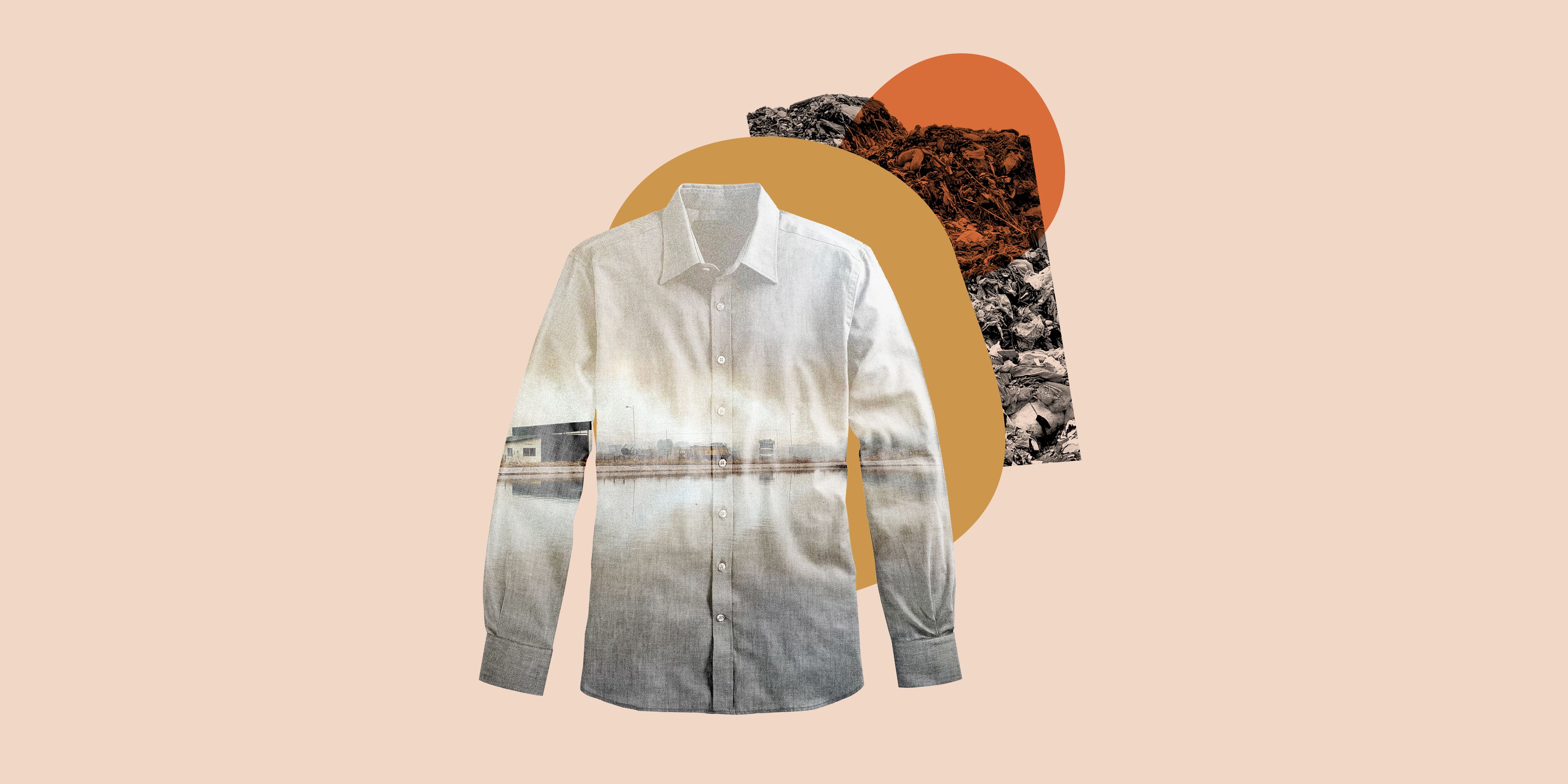How Cape Town Sustainable Fashion is Shaping Eco-Conscious Shopping
How Cape Town Sustainable Fashion is Shaping Eco-Conscious Shopping
Blog Article
Stay Ahead of the Contour by Discovering Cutting-edge Fashion Patterns
In a sector as vibrant as fashion, remaining ahead entails more than just adhering to current trends-- it requires an expedition of development. Smart fabrics, for instance, are transforming garments into practical work of arts, while 3D printing is transforming style processes with its personalized, waste-reducing capacities. As sustainability ends up being a foundation, developments like environment-friendly materials and circular style methods are reshaping environmental responsibility - Cape Town Sustainable Fashion. Furthermore, the convergence of technology and style proclaims a brand-new age of customer interaction. Exactly how, then, can these emerging fads redefine the future of style, and what ramifications do they hold for brands seeking to grow in this advancing landscape?

Accepting Smart Textiles
In recent times, the style industry has observed a transformative shift with the assimilation of smart textiles, a sophisticated development that mixes technology with material. This advancement represents not only a blend of visual appeals and capability but also a substantial jump in the direction of sustainability and customization in style. Smart fabrics, additionally recognized as e-textiles, installed innovative electronic devices such as sensing units and conductive strings within the textile, making it possible for garments to connect with the wearer or the environment.
These textiles are designed to monitor physiological parameters, such as heart price or body temperature level, giving real-time wellness analytics. Past health and wellness applications, wise textiles are also being utilized for adaptive apparel, which can transform shade or pattern in action to environmental stimuli, thus providing a dynamic fashion experience.
Moreover, the development of energy-harvesting textiles that create power from movement or sunshine is leading the way for self-dependent wearable innovation. This technology is interesting ecologically conscious customers and designers aiming to minimize the environmental impact of style. As r & d in this field advance, clever textiles are anticipated to end up being increasingly widespread, reshaping the landscape of modern-day fashion with their multifunctional capacities.
The Increase of 3D Printing
Transforming the production landscape, 3D printing has emerged as a game-changer in the garment industry. This sophisticated innovation has actually allowed designers to press the boundaries of creativity, creating intricate and tailored garments that were formerly inconceivable. By leveraging electronic layout and additive manufacturing, 3D printing facilitates the development of complex geometries and patterns, permitting designers to experiment with brand-new structures and structures.
A notable benefit of 3D printing in fashion is its ability to generate on-demand, decreasing waste and minimizing inventory needs. This performance not just optimizes production procedures but likewise permits quick prototyping, enabling developers to bring their visions to life in a much shorter timeframe. In addition, 3D printing supports modification to a degree unequaled by traditional techniques, supplying special styles and customized fits customized to individual customer choices.
The rise of 3D printing has also democratized fashion, making it available to emerging designers who can now fabricate top notch items without significant economic investment in standard production framework. As modern technology proceeds to breakthrough, the apparel industry is positioned to harness the complete capacity of 3D printing, checking out brand-new products and methods that will undoubtedly redefine how fashion is conceived and generated.
Lasting Style Technologies
As the style sector faces journalism requirement for ecological responsibility, sustainable fashion technologies have actually arised at the center of transformative adjustment. The expanding understanding of ecological influence has actually fueled a change in the direction of even more eco-conscious methods and materials. Designers and brand names are now focusing on sustainability, including approaches that decrease waste and lower carbon impacts.
One considerable advancement is the rise of round fashion, which emphasizes recycling and upcycling to expand the lifecycle of garments. This strategy not just decreases waste but additionally urges customers to take on an extra conscious technique to garments usage. Additionally, making use of browse around here sustainable products, such as organic cotton, hemp, and recycled polyester, has actually gotten traction. These products call for less water and power throughout production, considerably minimizing environmental influence.
One more breakthrough exists in the adoption of cutting-edge dyeing methods that utilize natural dyes or waterless processes, thus lowering the large quantities of water and chemicals traditionally made use of in textile dyeing. Moreover, advancements in biotechnology have caused the creation of lab-grown leather and materials, supplying environmentally friendly and cruelty-free options to standard products. Via these pioneering efforts, the fashion industry is making meaningful strides towards a much more sustainable future.

Tech-Integrated Clothing
Tech-integrated apparel stands for a cutting-edge blend of fashion and technology, reshaping just how individuals communicate with their clothes. This innovative domain name is marked by the inclusion of clever fabrics and ingrained digital components, boosting both capability and visual allure. From health and fitness trackers installed in sports apparel to warmed jackets managed through smart device applications, tech-integrated garments provides consumers unprecedented benefit and versatility.
Pioneering brands are driving this fad, concentrating on creating garments that reply to environmental stimuli or individual commands. For instance, some garments can transform shade or pattern in reaction to temperature level changes, while others include biometric sensors to keep an eye on health and wellness metrics like heart price or tension degrees. The smooth assimilation of technology right into fabrics additionally encompasses ecological sustainability, with initiatives to create self-cleaning textiles or garments that adapt to weather, thus lessening the need for multiple layers.
Moreover, the development of wearable modern technology is not simply limited to clothes however reaches accessories like watches and eyeglasses, additional expanding the extent of tech-integrated fashion. As the industry official website remains to introduce, the capacity for customization and personalization in clothing expands, using consumers unique, tech-enhanced style experiences that provide to their private needs and choices.
Future of Virtual Fashion
Over the last few years, the future of digital fashion has become a transformative pressure within the market, leveraging developments in digital modern technology to redefine just how fashion is developed, experienced, and consumed. By incorporating augmented reality (AR), digital reality (VR), and 3D layout tools, designers can currently craft interactive and immersive experiences that go beyond typical style boundaries. Digital style permits the creation of garments that exist solely in electronic atmospheres, providing endless possibilities for development without the restrictions of physical manufacturing.
This digital shift not just presents opportunities for innovative expression however additionally addresses sustainability concerns inherent in typical fashion techniques. Cape Town Sustainable Fashion. By removing the need for physical sources, virtual fashion reduces waste and decreases carbon footprints. In why not try this out addition, the rise of online fashion lines up with the raising consumer need for tailored and one-of-a-kind experiences, as digital garments can be personalized and tailored to private preferences with ease

Final Thought
The style market's future lies in the integration of innovative technologies and lasting techniques. Online fashion is positioned to redefine consumer communications.
In current years, the fashion industry has observed a transformative shift with the assimilation of wise textiles, a cutting-edge technology that mixes innovation with textile.As the style industry grapples with the pressing need for environmental obligation, lasting style advancements have actually emerged at the leading edge of transformative modification.In current years, the future of digital fashion has arised as a transformative pressure within the sector, leveraging developments in digital modern technology to redefine how fashion is produced, experienced, and taken in. The surge of virtual fashion lines up with the boosting customer demand for special and personalized experiences, as digital garments can be customized and tailored to private choices with ease.
The fashion industry's future lies in the assimilation of cutting-edge innovations and sustainable techniques.
Report this page